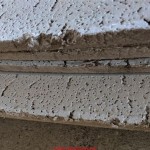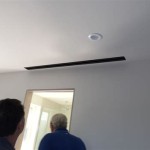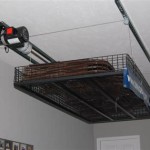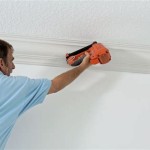What Brand of Ceiling Fan Is the Quietest In the World?
Selecting a ceiling fan often involves numerous considerations, including aesthetics, energy efficiency, blade span, and control options. However, for many consumers, particularly those sensitive to noise or seeking a tranquil living environment, the quietness of operation is a paramount concern. Identifying the absolute quietest ceiling fan brand on the market proves challenging due to the subjective nature of noise perception and the variability of installation factors. Nevertheless, it is possible to identify brands consistently recognized for their quiet operation based on consumer reviews, expert evaluations, and technological innovations.
While no single brand universally claims the title of "quietest," several manufacturers have invested significantly in engineering and design to minimize noise output. These brands incorporate features such as precision-balanced blades, advanced motor technologies, and dampened components to reduce vibration and air turbulence, the primary sources of ceiling fan noise.
Key Point 1: Motor Technology and Its Impact on Noise Levels
The type of motor used in a ceiling fan is a critical determinant of its noise level. Traditionally, AC (Alternating Current) motors were the standard, but they tend to produce more noise due to their inherent design. AC motors rely on electromagnetic induction and mechanical components that can generate humming or buzzing sounds, especially at higher speeds. Furthermore, AC motors often employ a capacitor-based speed control system, which can introduce additional noise as the capacitor switches between different speed settings.
DC (Direct Current) motors, on the other hand, have emerged as a quieter and more energy-efficient alternative. DC motors use magnets and electronic circuitry to regulate speed, resulting in smoother and more precise operation. This eliminates much of the mechanical noise associated with AC motors. The electronic control systems used in DC fans also allow for finer speed adjustments and smoother transitions, further contributing to a quieter operation.
Brands that extensively utilize DC motor technology are often recognized for their quieter performance. The reduced vibration and smoother operation inherent in DC motors translate directly into a more peaceful environment. Consumers seeking the quietest possible ceiling fan should prioritize models specifically equipped with DC motors.
Beyond the choice between AC and DC motors, the quality of the motor itself also plays a significant role. High-quality motors, regardless of type, are manufactured with tighter tolerances and more robust components, reducing the likelihood of vibrations and noise. Brands that invest in superior motor designs and rigorous testing procedures tend to produce fans with lower noise levels.
Key Point 2: Blade Design and Balancing for Noise Reduction
The design and balancing of the fan blades significantly contribute to the overall noise level. Blades that are not precisely balanced can cause vibrations, which translate into audible noise. As the blades rotate, even slight imbalances can amplify, leading to a more noticeable humming or rattling sound.
Manufacturers often employ advanced balancing techniques during the manufacturing process to minimize these vibrations. Static and dynamic balancing methods are used to ensure that the blades are evenly weighted and properly aligned. High-quality brands may also use computer-aided design (CAD) and computational fluid dynamics (CFD) to optimize blade shape and minimize air turbulence, a significant source of noise.
The materials used to construct the blades also influence noise levels. Blades made from heavier materials, such as solid wood or metal, tend to be more prone to vibration if not properly balanced. Lighter materials, such as engineered plastics or composite materials, can offer better noise dampening properties. The shape and pitch of the blades also impact the amount of air turbulence generated during operation. Blades with a more streamlined profile and a carefully optimized pitch can move air more efficiently, reducing noise and improving airflow.
Brands known for quiet operation often emphasize the importance of blade design and balancing. These brands may use proprietary blade shapes, advanced materials, and rigorous testing procedures to ensure that their fans operate smoothly and quietly. Before installation, ensuring the blades are properly attached and balanced can also contribute to minimizing unwanted noise.
Key Point 3: Dampening and Isolation Techniques
Even with the best motor technology and blade design, some vibrations and noise can still be transmitted through the fan's mounting system to the ceiling structure. To mitigate this, manufacturers often employ dampening and isolation techniques to minimize the transfer of vibrations. These techniques involve the use of rubber or other flexible materials to isolate the fan motor and housing from the mounting bracket and ceiling.
Rubber grommets, washers, and other vibration-absorbing components are strategically placed between the fan's moving parts and the stationary support structure. These components act as a buffer, preventing vibrations from traveling through the ceiling and amplifying into audible noise. The quality and placement of these dampening materials are crucial to their effectiveness.
The design of the mounting bracket itself can also influence noise levels. Some brackets are designed with built-in dampening features, such as flexible joints or vibration-absorbing pads. These features help to isolate the fan from the ceiling structure and reduce the transmission of noise. Brands that prioritize quiet operation often pay close attention to the design and construction of their mounting brackets.
In addition to dampening the fan itself, proper installation techniques can also minimize noise. Ensuring that the fan is securely mounted to a solid ceiling joist and that all screws and bolts are properly tightened can prevent vibrations and rattling. Using shims or spacers to level the fan and prevent it from wobbling can also contribute to quieter operation. Consumers should carefully follow the manufacturer's instructions and consider hiring a professional installer to ensure that the fan is properly installed and balanced.
While it's difficult to definitively name one single brand as the universally quietest due to variations in models and installation, several brands consistently receive positive reviews for their quiet operation. Hunter Fan Company, Casablanca Fan Company, Minka-Aire, and Fanimation are often cited as brands known for their commitment to noise reduction. These brands incorporate advanced motor technologies, precision-balanced blades, and effective dampening techniques to minimize noise output. When researching specific models, it's important to read customer reviews and consider published noise ratings, if available, to assess the fan's quietness.
Beyond specific brands, consumers seeking the quietest ceiling fan should prioritize models with DC motors, well-balanced blades, and robust dampening features. Paying attention to installation details, such as ensuring proper mounting and balancing, can also contribute to a quieter and more comfortable living environment.
Selecting a ceiling fan that operates quietly involves careful consideration of several factors, including motor technology, blade design, and dampening techniques. By understanding these factors and researching available models, consumers can make informed decisions and choose a fan that provides both efficient airflow and a peaceful atmosphere.
Ultimately, the perceived quietness of a ceiling fan is subjective and can vary depending on individual sensitivity to noise and the specific installation environment. Reading online reviews and seeking recommendations from trusted sources can provide valuable insights into the real-world performance of different models and brands.
Investing in a high-quality ceiling fan designed for quiet operation can significantly enhance the comfort and tranquility of any living space. By prioritizing these factors, consumers can find a ceiling fan that meets their needs for both performance and peacefulness.

Orient Aeroquiet Bldc Ceiling Fan Electric

Buy Silent Ceiling Fan प ख In Crompton

Orient Aeroquiet Bldc Ceiling Fan Electric
7 Best Ceiling Fans Of 2024 U S News

Orient Aeroquiet Bldc Ceiling Fan Electric

Choosing The Right Ceiling Fan With Lights 10 Factors To Consider For Prism

Libe Is A Simple Ceiling Fan Quiet Easy To Install And Use Ideal For Your Bedroom

Orient Aeroquiet Bldc Ceiling Fan 1200 Mm 310 Rpm At Rs 6800 Piece In Jaipur

Global Ceiling Fans 36 56 Reversible Commercial Fan

52 Inch 5 Wooden Blades Home Decorative Ultra Quiet Copper Motor Noiseless Global Chrome Ceiling Light Fan China Minka Aire And Kichler Made In Com
Related Posts








